After so much rain and bad roads since Limbe on the coast, I am finally getting closer to this ring road. I am on the way to Bamenda, the capital of the North West region.
The road from Mbouda to Bamenda is never flat. The rolling hills are beautiful but somehow disappoint me: knowing that Mbouda is at 1400 m and Bamenda at 1000 m, I expected a relaxing day.

The day is actually not relaxing at all, because before reaching Bamenda, which lays in fact at 1200 m, it goes first up to almost 2000 m in Santa.

The sign in Santa reads “Welcome in Santa, gateway to the North West region“. And instantly English replaces French. I am a “white man white man why man why man waman waman!” again. Although I hear very rarely “sara” and “sara-man”, I guess it means white in the local language. “Ashia” is the greeting.
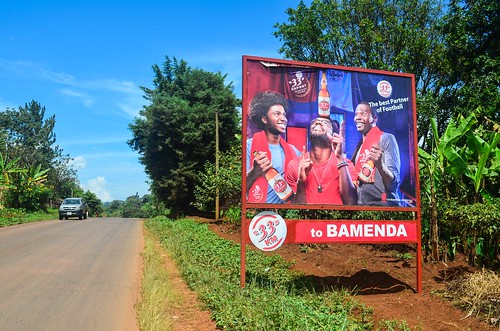
The air is fresh and the first views of the mountain scenery under the blue sky is nice. The uphill never stops until 1950 m but it is smooth enough to be cycled. The “you white give me your bicycle” of the francophones stops.

From Santa, it is a steep downhill until Bamenda, lasting 15 kilometers, but with enough potholes and road works to be enjoyed stressfully and carefully.
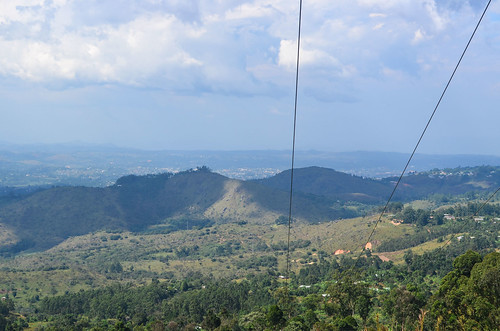
Once in Bamenda, the proper ring road begins. I don’t spend the night here but start directly on the first hills to make the afternoon as tough on the legs as the morning was. The ring road is 375 kilometers of rolling hills, sometimes paved but often gravel or mud. It is known as a major attraction of Cameroon, but is often feared for its poor quality, since some sections are impassable during the rainy season. The public transport can break down on the way, taking several days to link two cities. Counter-clockwise, the cities are Bamenda, Ndop, Jakiri, Kumbo, Nkambe, Misanje, Nyos, Wum, Bafut, and back to Bamenda.
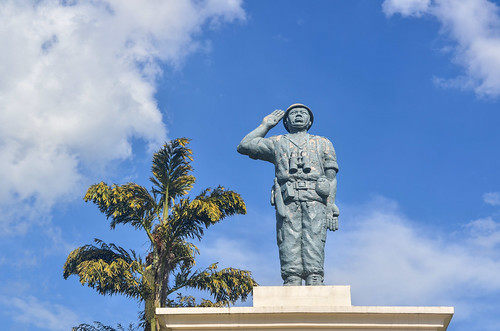
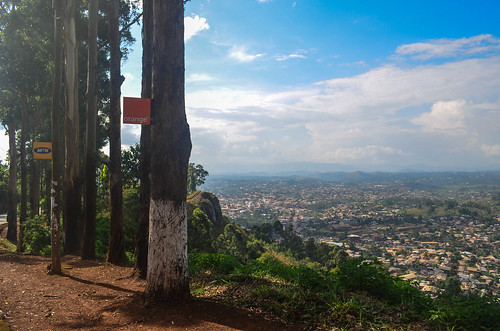
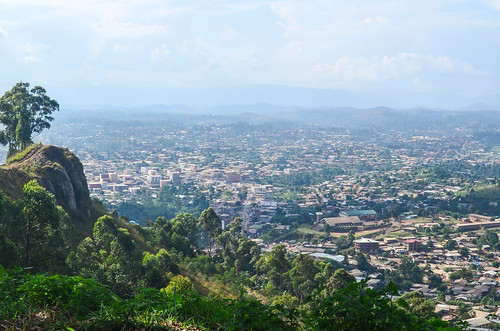

It starts with a steep uphill to Sabga, that I spend almost entirely pushing, from 1200 m to 1800 m. It is beyond 6 pm and very dark already when I reach the top. I don’t know where I am stopping, and I have no water and no food.

I have been easy-going checking in cheap hotels lately, and it removes slightly the taste of adventure. I can sleep dry, have food stalls nearby for dinner, and as a result I barely use my tent and stove anymore. Now in the mountains, it is more rewarding to be camping. As there is not so much accommodation around the ring road, it is the opportunity to return to the adventurous lifestyle. I fetch water from a river stream popping by the road, and an improbable mini food market at a junction with a small road, in the middle of nowhere, leaves me with miondo and donuts.
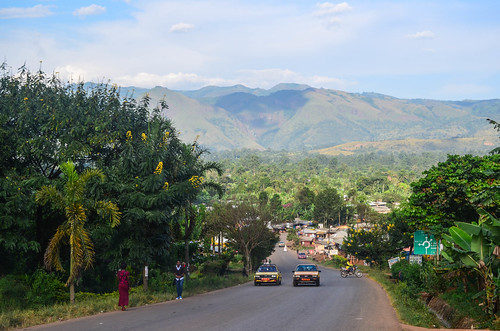
A few kilometers later, at the last minute of daylight, I get one refusal to camp near a house but the second trial is good. It is on the compound of a Baptist health center, at the beginning of the Sabga village. The Baptist Church is really popular in the area.
Abraham welcomes me over and I pitch my tent. There is even a shower outside, but at 1700 m high, the usual shower with cold water is a real unattractive cold shower! The sky is clear but broken by flashes of lightning in the background. We watch together a video on DVD, from Pastor Bimbo of a something something church of Nigeria, speaking about how the devil is pushing people into premarital sex.
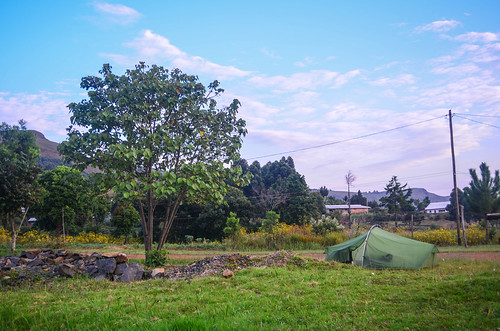
The interest of Sabga, apart from the White man owning helicopters and flying around the region’s hilly surface about whom everyone speaks, is the Sabga hill. I get off the bike to use my trail shoes for what they are made. They are actually not good for anything anymore, apart from absorbing water.
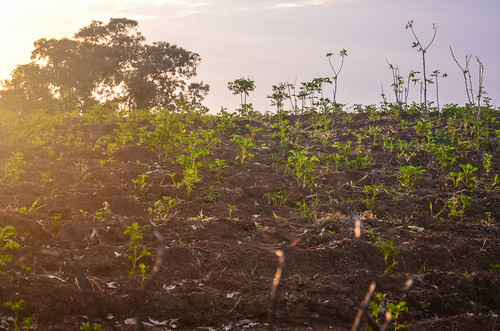
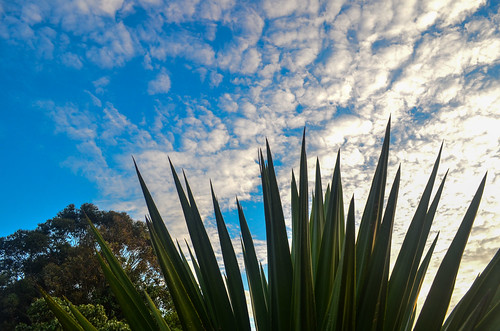
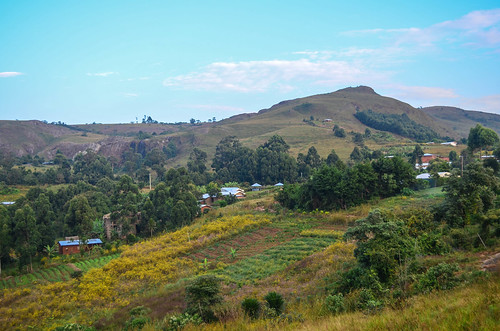
Sabga hill is a 15 minute steep climb just by the road, and the views from there are worth the sweat.
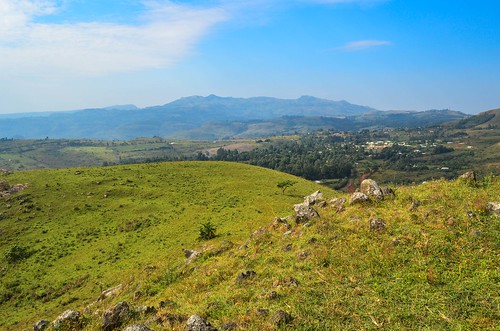
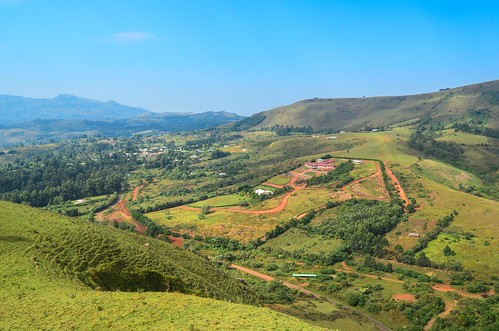
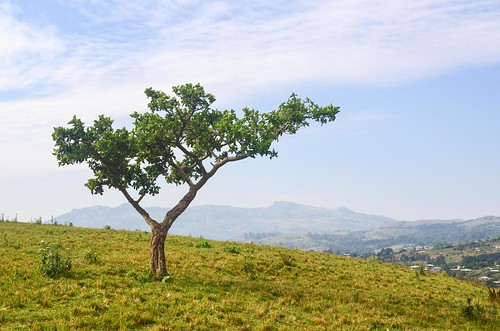

There is a long descent just after the Sabga hill, just after the ascent of yesterday, where a short tunnel would be perfect to avoid yoyoing around 1200 m – 1800 m – 1200 m. But a tunnel is probably a rare animal for Africa. It reminds me that I passed through a tunnel only once so far, and it was in the Ziz gorge in Morocco.
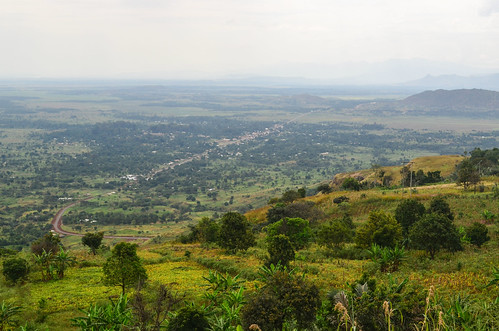
The road is paved until Jakiri where another long uphill from 1200 m to 1800 m takes place. It offers stunning views, but I have to push the bike again through most of it. And even the most uncomfortable slopes of the hills are planted with something edible.
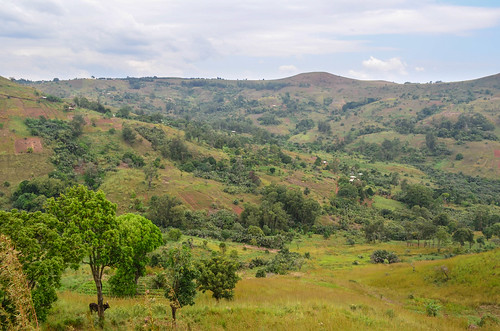
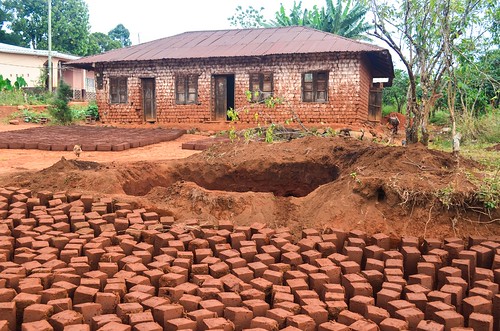
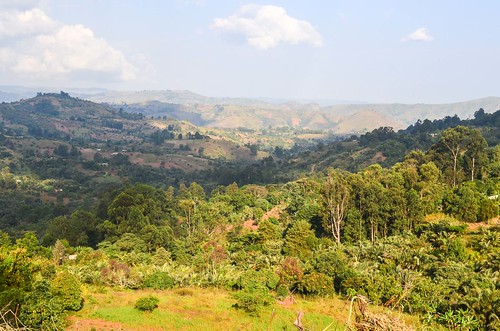
From now on, the real ring road starts: there is no more asphalt. It is currently under construction on the short section until Kumbo. The contractors are not Chinese but it is Sogea Satom, the African branch of the French group Vinci. However, I was told that the rest of the ring road would be given to the Chinese. It has been 20 years that the (same) president Paul Biya is announcing he is paving the ring road, and it might be a dream finally coming true.
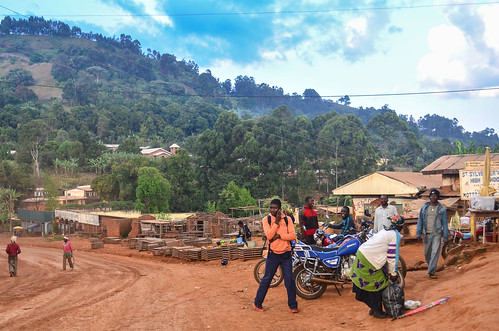

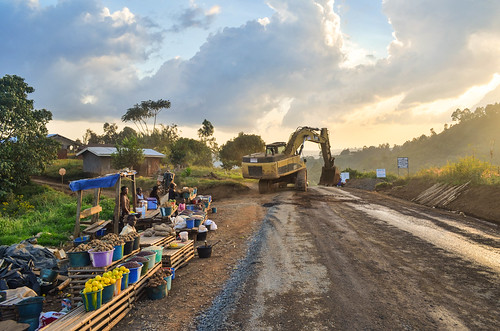
The road to Kumbo has ups and downs, as usual, and the city itself seems to have no neighborhood built on a flat land. It has steep slopes right inside. Since the entrance of the town, the people, traditionally drinking by the roadside, are making fun of me, of my hair or of the bike. It is a strange welcome, and since I disembarked in the country it is hard to say the Cameroonians are friendly.
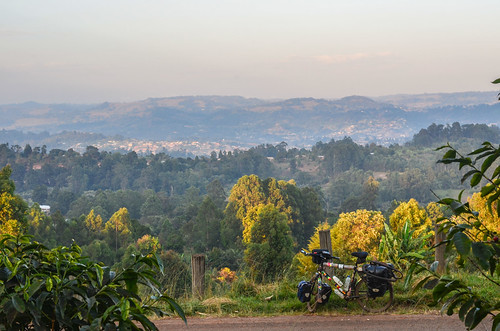


Kumbo, the biggest city of the ring road with a population around 80’000, has no street lights. With the cold of a town above 1600 m and citizens wearing jackets and hats, the scene couldn’t more complete with the Jingle Bells songs playing at almost every shop. It resonates like Christmas.
I stay in Kumbo for a rest day as the recent hills have left me quite tired. But I am far from being idle, with things to check on the bicycle.
Since I have to change my brake pads, I unmount the Magura hydraulic brakes and clean them entirely. They actually have a fair amount of screws compared to simple V-brakes. It is strange to see them black as new, as they have been reddish since the Moroccan mud. The small amount of mud and dust going into the mechanisms can be carried very far as it doesn’t get cleaned easily. The small red particles I am toothbrushing now are probably from Guinea or Nigeria.

Apart from the brakes, my chain also needs care. It makes a small cracking sound at each rotation, roughly every fifth time I hit the pedal (42 teeth chainring for 100 chain links), while it is well tensioned and perfectly clean. I can’t get rid of this small noise; it may be that I need to change the chainring? I have been with the same 42 teeth since departure. Or maybe simply that the KMC chains elongate faster than the Rohloff chains. It has been 7000 decent kilometers with this chain.
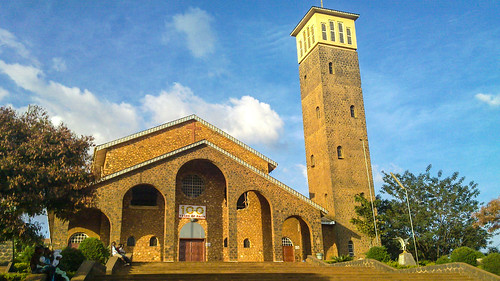
In the late afternoon, Cameroon wins, defeating Tunisia 4-1, and qualifies for the football world cup in Brazil. That makes finally a good reason for the people to be at the bar and drinking for the whole day.
I return to the lady cooking various dishes for dinner. I had two dinners yesterday, and can have another two tonight without eating the same thing. With the meat, she makes gari, rice and beans, water fufu and eku (kassava leaves and cow skin), cabbage, fufu corn (white tasteless light paste)…
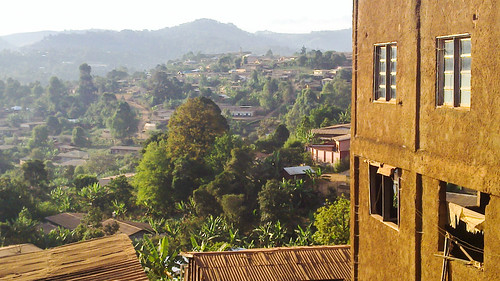
On leaving Kumbo, I decide to visit the Fon’s palace. The North West region is known for the Fons, the local chiefs that have a considerable power despite the administrative division of the country. Each town or village has one Fon and one palace.

I can’t see much of the palace as most of it is private. I am shown only the area where people come for consulting the Fon. The visit is very short and rather disappointing. My guide is the same man sitting in front of the palace as yesterday, who asked for 600 CFA for a beer to go with his cigarettes.
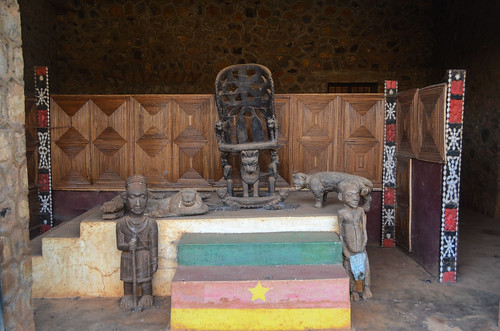

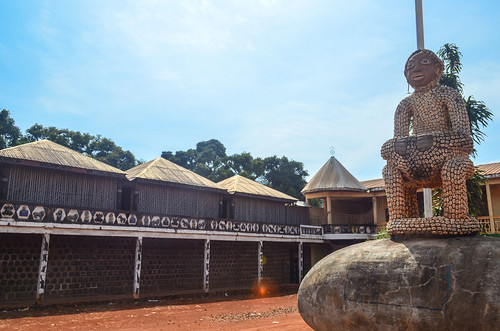
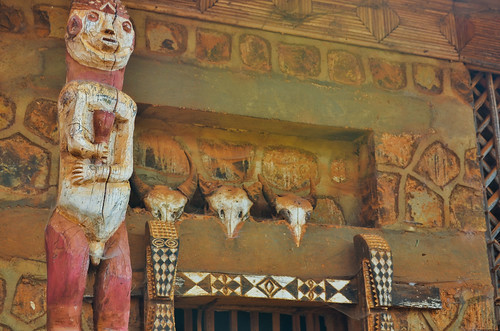

The road to Nkambe is not paved but not too bad. The traffic is almost absent. There are few villages punctuating the journey, but there are houses as far as I can see in the grass among the pine trees.

By the way, that is something new for me: pine trees and not palm trees. They also smell like pine trees, it really feels somewhere else than Africa. There would be no sound in those hills if the chainsaws didn’t hum among the trees.
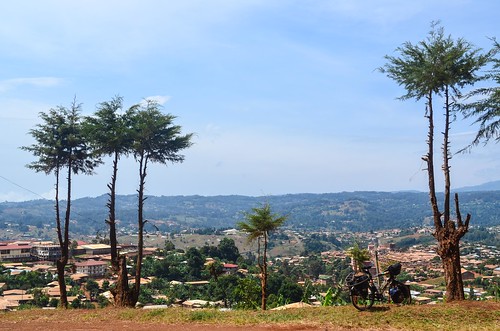
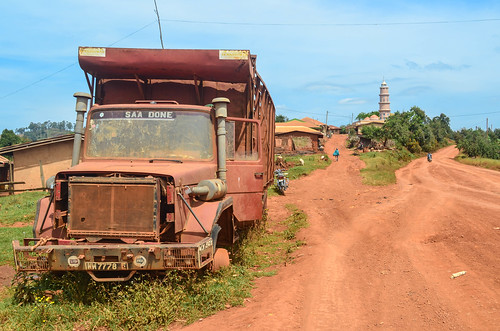
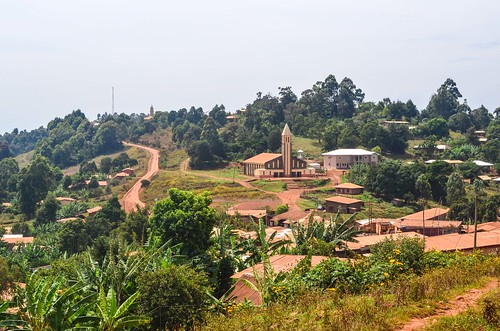
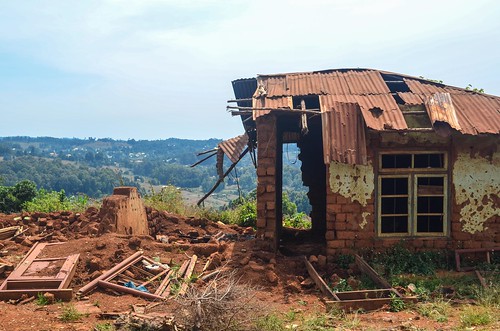
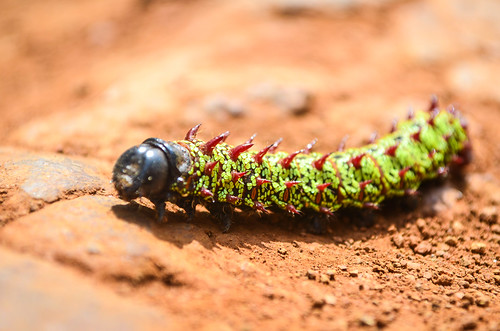

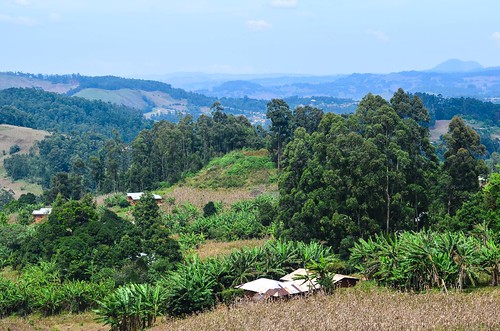
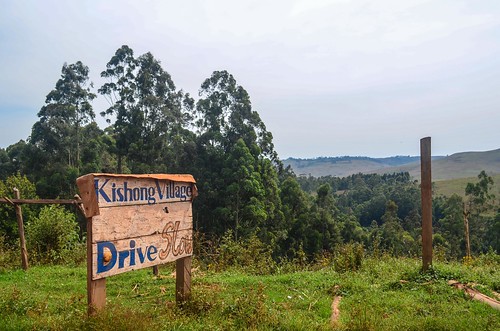
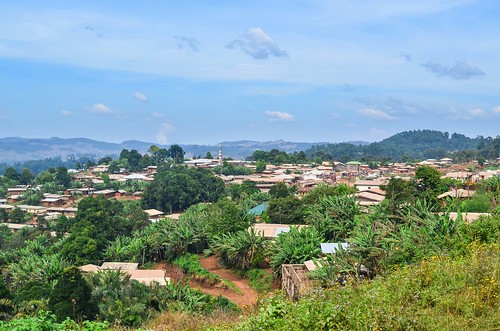
The road keeps going up, to 2150 m. Kids are wearing uniforms of various colors on the way. I eat cow meat in Tatum, but I don’t know if I can call it beef: it is the head and the foot. Despite the unappealing aspect of the cauldron’s contents, it is delicious, I can pick my pieces from huge pot on the fire and it is served with gari, double portion for me.

Right after Tatum, I see something else I didn’t expect, but which is after all very logical. The region is above 2000 m, it is not too hot and not too cold, and it was a British colony: a suitable place for tea plantations. I have seen many in India and Sri Lanka, and it looks just the same.
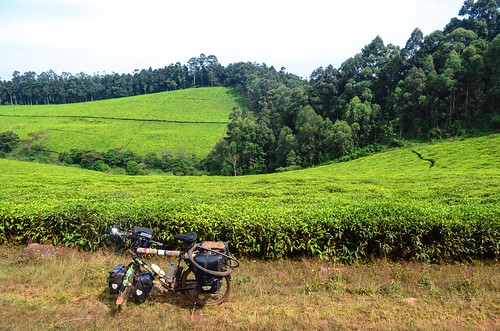

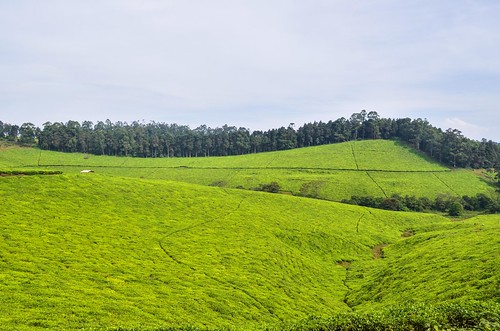
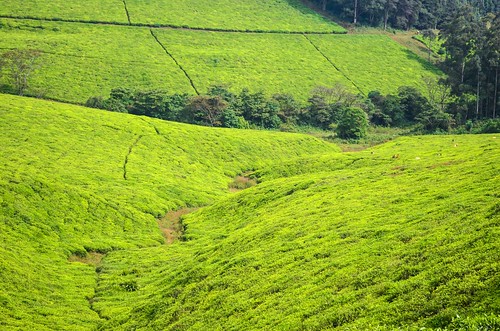
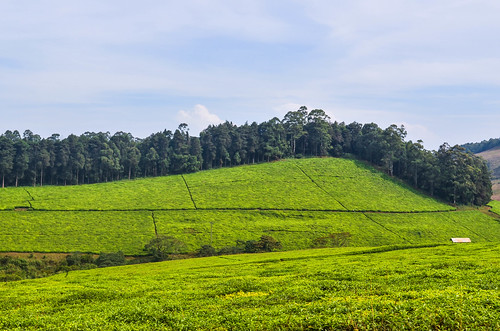
CTE, Cameroon Tea Eatates, produce yearly 1800 tonnes of made tea (product obtained after the processing of the fresh leaves) in the Ndu plantation.
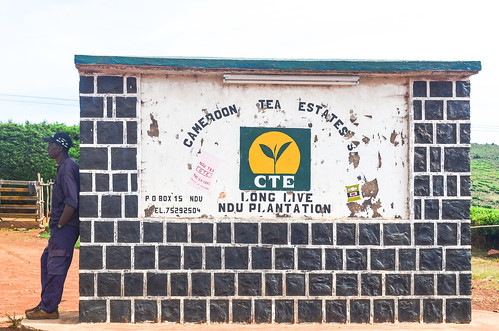
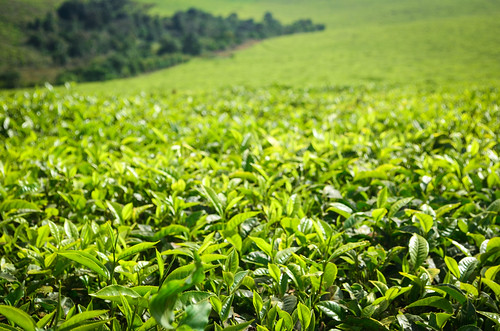

Around Ndu, the machines are grading the road. It makes it very smooth, I am lucky they did it just three days ago, just before the rain. If the road is not graded, it is still OK (and dusty even if it rained at night): I go slowly in the small cracks and can still ride it. It is far from being as bad as the stones on the Kumba-Tombel road.
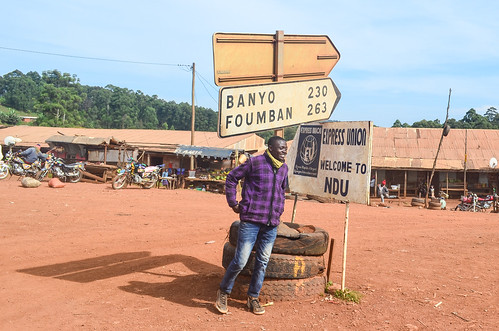

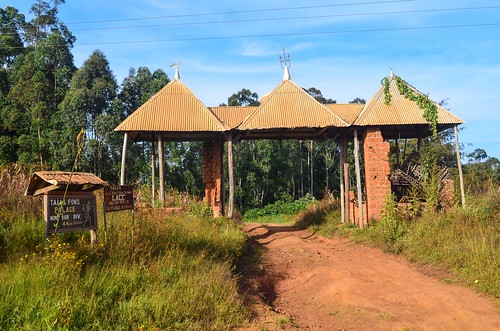
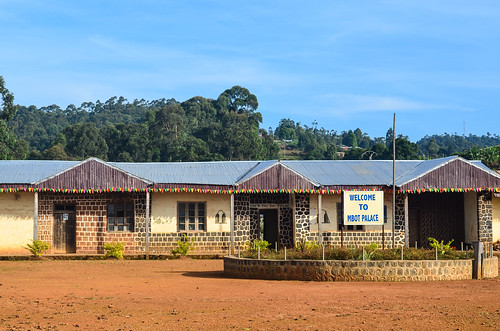
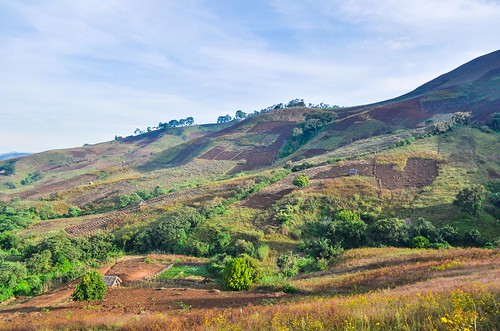
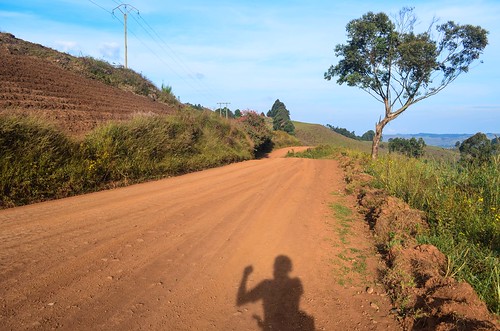
I pass a guesthouse in Binka without stopping but Nkambe is still far after this. At the last minute of the day, the last minute it is still possible to see the road (it is dangerous at night, for not seeing the potholes and rifts), I pick a track on the right and get ready to camp. I visit the house that is not too far, from which I hear sounds of children playing, to introduce myself, but I get invited by Irene and Ndi Roland to stay over. There is no electricity until here but the shower is the best: there is a tap on a concrete slab, magically located there in the middle of the valley, alone under the stars.








Thanks guy I enjoyed travelling with you people from Bamenda to Ndu. Thanks for bringing home closer to me in London. the pictures were amazing. Too many palaces in the North west of Cameroon.
Thank you for visiting our people and our land.
Come back again.
Blessings
TribalMonk
What an experience, i dont find the mentality of the north west hinter land people very different from what you described. Though it is but very normal for them to laugh when they see a white man riding a bicyle is still the mentally they have that the white man is superior and to them would only drive in a car or fly in the skys. I like your pictures, but there is something very percular of the north westerners especially the hinterlands they are very hospitable, or might be you did not come accross any of such persons, and for the issue about beer, is like * Is like a general tradition in the intire country *, to me when visiting a place like nyos i would go with a hot drink, cigarette and a dollar or round figure word as used in cameroon 5000frs for the millitary that is their defination of friendship with no strings attached. Which in the cameroonian millitary tradition is expected from some one of your personality.
I especially like your story in nyos, kimbi game reserves, wum, etc. Beneath the earth there host valuable minerals and a fertile land that feeds the NW, and a large part of the west, and central. Bravo on your journey and work.